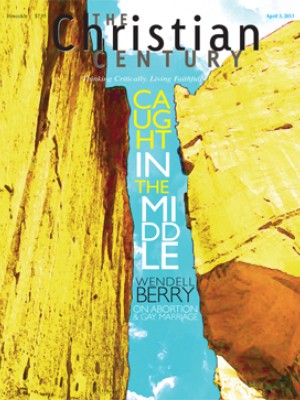Churches weather the recession
A survey that asked churches how they fared during the economic recession found that there was a collective sigh of relief from most pastors and congregational leaders—nearly 75 percent said “well” or “very well.” And the majority of congregations (65 percent) reported that their finances either remained the same or improved in giving from 2010 to 2011, after the worst of the recession.
Nonetheless, troubling signs appeared in the data in the 2013 Congregational Economic Impact Study, according to William G. Enright, director of the Lake Institute on Faith & Giving at the Indiana University School of Philanthropy. In an interview with the Century, he cited a few of them:
Read our latest issue or browse back issues.
• “Only four in ten congregations reported that their revenues (donations and other income) kept pace with the 8 percent rate of inflation between 2007 and 2011, which means 60 percent did not.”
• “It appears that there might be an overly optimistic tendency among congregations to see things in a more positive light than reality allows when you consider the lessened value of the dollar,” he said. One-third of the churches said their finances “worsened” during the economic slump.
• “Recovery from the recession does not appear to be as robust as that of other sectors of charitable giving,” he said, citing another study (Giving USA) that said religion was the only charitable sector that got fewer dollars in 2011 than in 2010.
• Congregations with a younger average age (between 35 and 54 years) were more likely than older-membership churches (55 and above) to increase their giving from 2010 to 2011—a statistic of interest to aging congregations seeking to bring in new energy from younger generations.
The study provides a comparatively large window on mainline Protestants. Two-thirds of the 3,100 U.S. congregations surveyed were from the ranks of mainline churches and a quarter from evangelical congregations. Evangelicals (26 percent) currently outnumber mainline Protestants (18 percent), according to the Pew Forum.
A major partner with the Lake Institute surveys is the Alban Institute, which has a large mainline church constituency. Some respondents were from Catholic parishes, historic black churches and other denominations.
While 75 to 80 percent of Catholic priests and black church clergy are aware of who gives and how much, only 46 percent of mainline clergy and lay leaders said their pastors are aware of the giving trends in their congregations. Enright said the “laissez-faire approach” is misguided.
“While many clergy are reluctant to delve into information related to individual giving, it is via their giving that many donors turn their beliefs into a way of living,” Enright said in a statement when the Lake Institute study was released on March 5. Church members and attendees “do not see this form of pastoral care as offensive or intrusive.”
Cash and checks are still common methods of donating to church coffers. But two of every three congregations use some form of electronic giving. Beyond direct deposit and credit and debit cards, some houses of worship even provide indoor kiosks for attendees to make payments.
“Congregations are remarkably resilient,” said Una Osili, research director for the School of Philanthropy. “There are still many in need, but it appears that the majority we surveyed are recovering from the worst of the Great Recession.”
Enright added: “They really tried to be good stewards of limited resources. The last things that many of them wanted to cut were outreach programs and missions to their communities. They put a cap on salary increases and deferred building maintenance first.”
One respondent to the survey wrote to the institute: “Every week, what we get in our Sunday offerings we now give to a different nonprofit in our community.”



